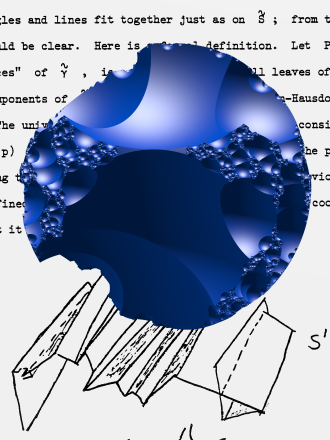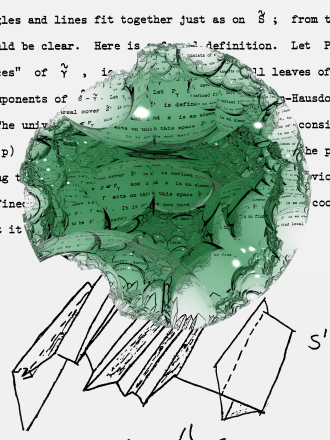

by Jeffrey Brock and Emily Dumas
Click on either image above for a larger version.
This Kleinian group is free on two generators, giving a hyperbolic structure on a genus-2 handlebody with two rank-1 cusps along curves on the boundary surface. The particular hyperbolic structure shown here corresponds to a critical point of Thurston's skinning map. (The existence of such a critical point was established by Jonah Gaster.)
These renderings were created for the frontispiece of the second edition of Outer Circles: An Introduction to Hyperbolic 3-Manifolds by Albert Marden (Cambridge University Press).
For another image in a similar spirit, see “Bug on notes of Thurston”.